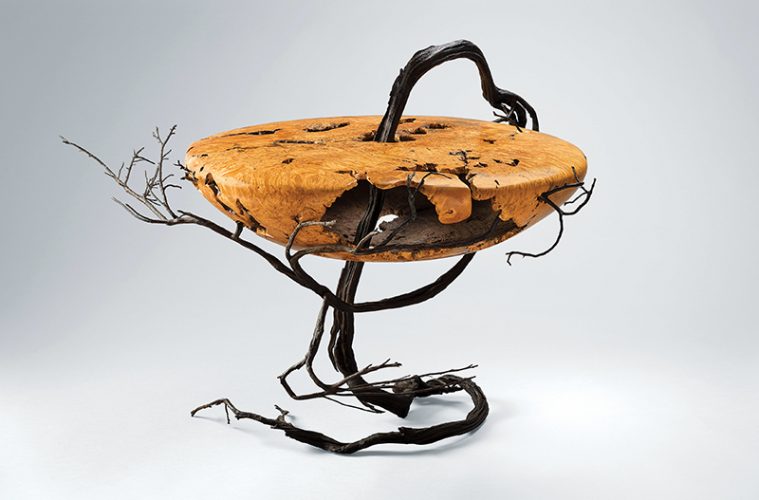Attention museumgoers: Our beloved PEM has something exceptional on view through June 21, 2015. Audacious: The Fine Art of Wood is a gem of an exhibit from Robert Bohlen and Lillian Montalto Bohlen’s personal collection—one of the finest wood turning collections in the country—comprising nearly 300 works representing 107 artists from eight different countries. Featuring over 100 pieces, the show shines light on an often underappreciated art form.
Over the last century, the practice of shaping wood by lathe has garnered attention as artists rediscover—and elevate—the medium. “As we started to see the intricacies of work from different artists, we quickly realized that what was considered a craft, really was fine art,” says Lillian Montalto Bohlen. “So we set out on an expedition to get the art world to take a different position on the work these artists were doing.”
The Bohlens started collecting wood-turned artworks in 1996, following the purchase of an expertly honed small wooden box in San Francisco. Since then, they have given approximately 870 pieces to various museums, 47 of which landed at PEM. “Our objective was to get museums on artists’ resumes so the art world and the art-consuming public would [give] that stamp of approval and consider these people really terrific artists,” explains Bob Bohlen.
Lillian and Bob are art patrons in the truest sense. Following the combined advice of four curators, they reached out to 73 artists, explaining their interest in buying artworks outright. “Artists sometimes work piece to piece to stay in existence,” notes Lillian. Following the Renaissance model of patron- age, the couple began putting artists on their payroll so “they could freely develop their best work.” To date, the Bohlens have worked with 250 artists, across continents, using wood as their medium.
Back in the early 1990s, wood art was viewed as a handicraft— bowls, spoons, plates, and vessels made up the bulk of what was being made. By the mid-1990s, the form was moving away from that notion. “The wood art movement is where glass was 10 years ago,” says Bob, who notes wood artists today are getting between $40,000 and $50,000 for pieces that would have fetched $5,000 just a decade ago.
Seeing the artists succeed is their greatest pleasure. “The journey is twofold: the hunt for new artists, new pieces, and then watching their development,” says Lillian. “Getting a piece into a museum makes their work more valuable.”
“It takes a long time,” says Bob of the art world’s change of attitude toward wood art. “It takes a lot of work and a lot of endorsements, and it comes very slowly. Shows like this are a huge benefit to the public and the artist both, and the museum world as well.” The Detroit Institute of Art, Museum and Design, the Mobile Museum, and the University of Michigan Art Museum are among the institutes who have supported the art form.
For the Bohlens, deciding to acquire a piece begins with its visual appeal. The pair also considers whether the artist has produced many good works or has had a singular success. They have a rule that a new piece must place in the top 50 of their current collection. Additionally, they look at a piece three times before making a buying decision. “We have serious interest in a lot of artists,” says Bob.
They receive daily emails from artists looking to be considered for their collection, or for help finding galleries that will represent them. “We’re pretty open-minded,” says Bob. “We are always looking.”
For those who plan to see the Audacious exhibit, Lillian suggests taking special note of the quilt titled The Theory of Everything by Fraser Smith. “Even when people are standing two to three inches away from it, they think it is fabric, and it is a block of wood.”
When the Bohlens started collecting, there were only two museums in the country housing wood art collections. Today, there are 42—thanks, in part, to their prolonged patron-age of the form. Their shared hope is to push the envelope in terms of what constitutes high art. pem.org

